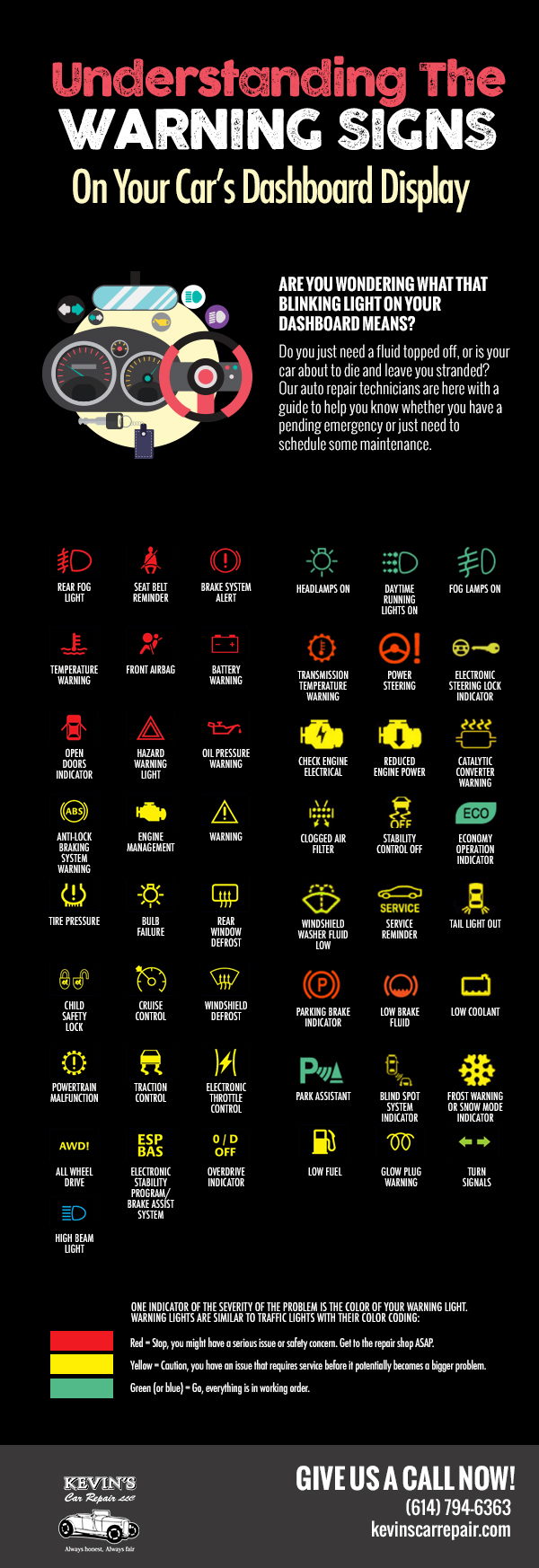Curious About Those Control Panel Warning Lights In Your Cars And Truck? Figure Out What They Indicate For Your Vehicle'S Health And Wellness
Curious About Those Control Panel Warning Lights In Your Cars And Truck? Figure Out What They Indicate For Your Vehicle'S Health And Wellness
Blog Article
Article Developed By-Termansen Gilbert
When you lag the wheel, those radiant caution lights on your dashboard can be a little bit puzzling. Do mobile car detailing reviews understand what they're attempting to inform you regarding your auto's wellness? Understanding the relevance of these lights is vital for your safety and the longevity of your automobile. So, the next time among those lights turns up, would not you wish to understand its message accurately and take the needed steps to address it?
Common Warning Lighting and Interpretations
Identify common caution lights in your cars and truck and comprehend their significances to guarantee risk-free driving.
The most common warning lights include the check engine light, which signifies problems with the engine or exhausts system. If this light comes on, it's critical to have your vehicle examined quickly.
The oil pressure cautioning light indicates low oil pressure, calling for instant attention to prevent engine damage.
A blinking battery light may suggest a faulty charging system, possibly leaving you stranded if not attended to.
seat shampoo car wash (TPMS) light notifies you to reduced tire pressure, influencing lorry stability and fuel effectiveness. Ignoring https://brakes-near-me51739.blue-blogs.com/36660613/discouraged-with-unsatisfactory-results-learn-exactly-how-to-prevent-regular-automobile-outlining-errors-and-uncover-the-tricks-to-attaining-an-excellent-surface can bring about hazardous driving conditions.
The abdominal muscle light indicates a problem with the anti-lock stopping system, jeopardizing your capacity to stop swiftly in emergency situations.
Finally, the coolant temperature advising light warns of engine overheating, which can lead to serious damages otherwise fixed swiftly.
Understanding these common caution lights will certainly aid you resolve concerns promptly and keep secure driving problems.
Importance of Prompt Attention
Understanding the typical warning lights in your cars and truck is just the very first step; the value of promptly dealing with these warnings can not be highlighted enough to ensure your safety when driving.
When a caution light brightens on your dashboard, it's your car's method of communicating a prospective problem that requires interest. Neglecting these cautions can cause a lot more extreme troubles in the future, endangering your security and potentially costing you extra out of commission.
Motivate attention to alerting lights can stop malfunctions and mishaps. As an example, a flashing check engine light can suggest a misfire that, if left neglected, could create damage to the catalytic converter. Addressing simply click the following internet site without delay can conserve you from a pricey repair work.
Similarly, a brake system warning light may signal low brake liquid or worn brake pads, crucial elements for your security when driving.
Do It Yourself Troubleshooting Tips
If you observe a caution light on your dashboard, there are a couple of DIY fixing ideas you can try before seeking expert help.
The initial step is to consult your vehicle's guidebook to understand what the particular caution light suggests. Occasionally the issue can be as straightforward as a loosened gas cap activating the check engine light. Tightening the gas cap might fix the problem.
One more typical concern is a low battery, which can set off various cautioning lights. Checking the battery connections for rust and guaranteeing they're protected might take care of the trouble.
If a caution light lingers, you can attempt resetting it by separating the automobile's battery for a few minutes and afterwards reconnecting it. Furthermore, inspecting your vehicle's liquid levels, such as oil, coolant, and brake liquid, can aid fix cautioning lights associated with these systems.
Verdict
Finally, understanding your vehicle's warning lights is necessary for keeping your automobile running efficiently and securely. By promptly dealing with these signals and recognizing what they imply, you can avoid costly repair services and prospective break downs.
Remember to consult your auto's manual for particular details on each advising light and act accordingly to ensure a trouble-free driving experience.
Keep informed, remain safe when traveling!
